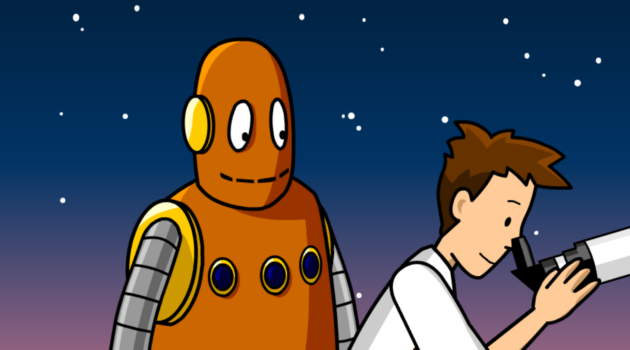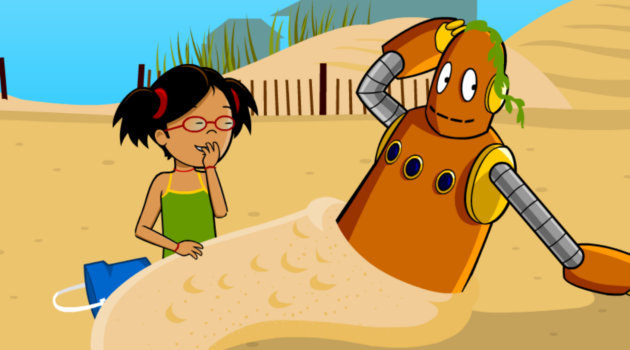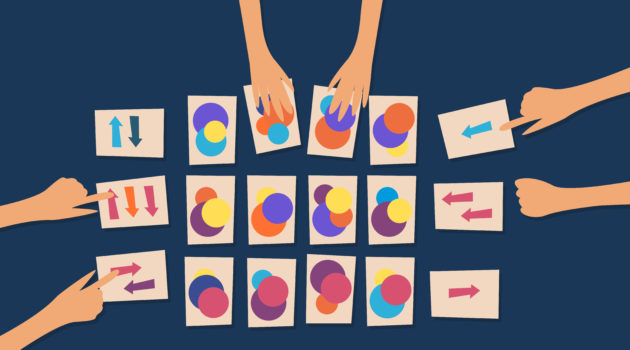Home Learning
Summer Learning Activities: Let the Good Times Roll!

When kids learn how to ride a bike, it’s a rite of passage. First, they race around the house or up and down the sidewalk on a tricycle. Then, they get their bearings using training wheels. Finally, they’re ready to navigate on their own with a patient adult running behind as a spotter.
As kids get older, bikes, scooters, roller skates, and skateboards help satisfy their quest for mobility and independence. Mastering those wheels with squeals of joy (and sometimes trepidation) can not only boost confidence, coordination, and strength, but also brainpower.
So what makes the world of wheels go around? Pair some BrainPOP movies with do-at-home family activities to learn about the mechanics, forces, and laws of motion that propel the fun. Throw in a few wheel-inspired online games to really get the gears turning.
View and Do: Bicycle Safety
Before your kids zip off, make sure they understand the importance of wearing a helmet and practicing other safety measures. Make space for that conversation by watching the BrainPOP movie on Bicycle Safety together, and discuss what they learned. Then inspect their gear to make sure everything is in good working order and sized appropriately.
View and Do: Simple Machine Scavenger Hunt
As you prepare for your next cycle or skate outing, view the BrainPOP Jr. movie on Simple Machines and the BrainPOP movies Wheel and Axle and Pushes and Pulls. They’ll build background knowledge on the basics of pulleys, ramps, levers, and more. If you don’t have a BrainPOP subscription, sign up for a free trial to access the online learning fun.
Next, set your kids up with a scavenger hunt to identify simple machines in real life.
What you’ll need:
- 2 or more players
- A timer
- Paper and pencils
What you’ll do:
- Invite your child—and any other willing family members or friends—to go on a scavenger hunt to search for examples of simple machines. (Review different types of simple machines like levers, wheels and axles, ramps, and pulleys.)
- Hand each player a piece of paper and pencil to record their finds. Set a timer for 30 minutes (or any time frame that works for your family) and begin the hunt!
- This activity can be done at home, at the park, in a local store, or even on a car trip around town.
- When time is up, compare lists, and see who found the most examples of simple machines. Every wheel and doorknob counts!
- Give extra credit for examples of compound machines, which combine more than one simple machine to make work easier (e.g., scissors, can opener, fishing rod, or crane).
Play is the work of childhood.
Jean Piaget
View and Do: Go the Distance
When someone on wheels is gently pushed, there are several factors that influence how far they will roll. In Energy Skate Park: Basics (available on BrainPOP GameUp), kids can play with ramp angles, speed, friction, and the mass of the skater, and observe how the different types of energy (thermal, kinetic, and potential) change with these variables. Prompt them to reflect on what they see: What conditions can you create to make the skater zoom off the screen? Can you observe (and name) those variables the next time you’re on a bike, skateboard, scooter, or skates? The BrainPOP movies Newton’s Laws of Motion and Acceleration will definitely ramp up kids’ learning about these concepts!
Here’s a do-at-home family activity for a rainy day to help illustrate the facts about friction.
What you’ll need:
- 3 identical toy cars (examples of a wheel and axle)
- Cardboard or foam board (approximately 2–3 feet long)
- Glue
- Marker
- Scissors (a compound machine)
- Sandpaper
- 3 feet of fabric (source from recycled clothing your kids have outgrown)
What you’ll do:
- Draw three lanes or tracks that run the length of the board and are wide enough for the toy cars. Create one lane by gluing strips of fabric to the board. Create a second lane by gluing strips of sandpaper to the board. Use the plain cardboard or foam for the third lane.
- With the board laying flat on the ground, place the cars on the different tracks, and give them a gentle push to observe how far they roll.
- Next, place the cars at one end of the tracks and slowly raise that end of the board to create a ramp. How much of an angle do you need for the cars to begin rolling on the different tracks?
- Try creating a steep incline and releasing the cars at the same time. Which car moves the fastest and which moves the slowest? Ask kids to explain why!
- How would the results change if you added weight to one of the cars? Try taping a few pennies to one of the cars to test your hypothesis.
Play = Learning
Psychologist Jean Piaget famously said, “Play is the work of childhood.” There is educational value in the recreational fun that your family engages in together and in the games kids play alone. According to the Encyclopedia of Child Development, “Both free play and guided play are essential for the development of academic skills.”
BrainPOP’s Senior Manager of Education Programming Priya Mathur echoes this idea, and acknowledges that we may not always value playtime and games as much as we should. “Games are often perceived as a treat or reward rather than something that adds learning value,” she says. “They’re not just for fun,” she adds. When it comes to digital games in particular, the “constant feedback encourages kids to persevere through trial and error to succeed.”

Karen Kane is an editorial, marketing, and communications professional focused on creating meaningful print, digital, and real-world experiences for kids, parents, caregivers, and educators.






